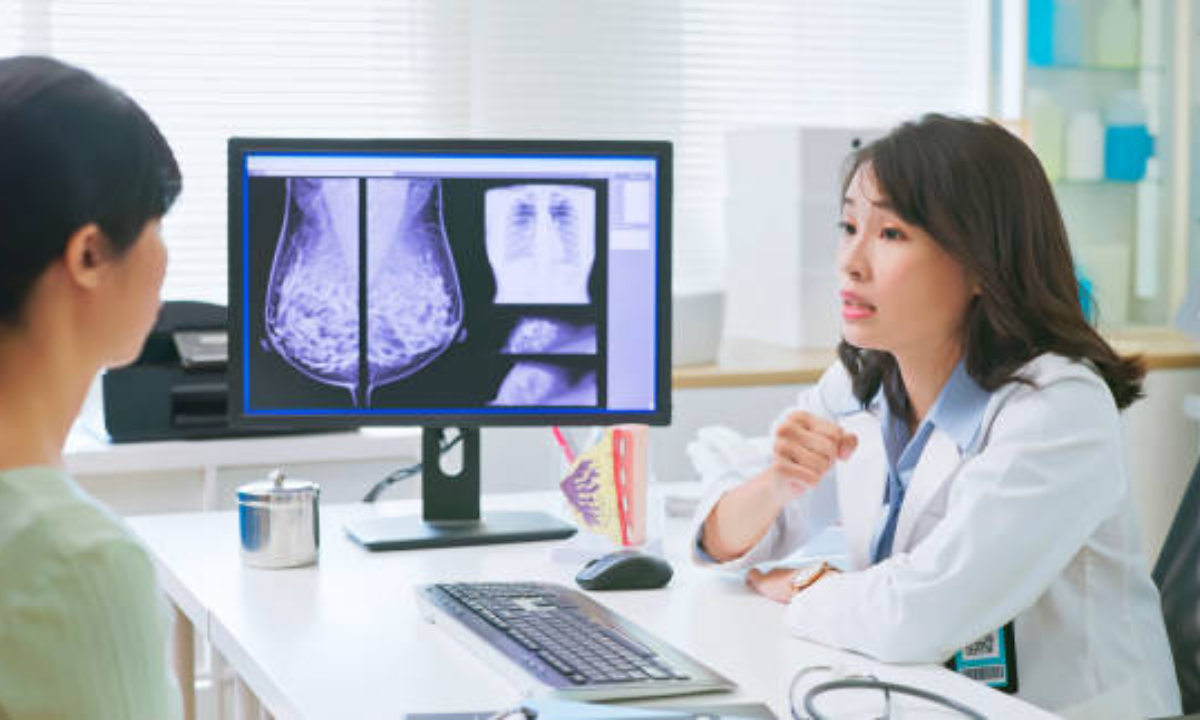The health story of every woman is unique; nevertheless, there is one huge checkpoint that every woman is faced with at the age of 40: the mammogram. At this age, there is a possibility of changes in breast density, and other rates of risk might also shift. These alterations render the importance of regular screening. The understanding of the relevance of a mammogram allows women to make more confident decisions and take initiative. Have it done early, when catching a mammogram, small troubles can be noted before this mammogram, but after 40, it escalates. Fast treatment can make a difference between life and death.
What is a Mammogram?

A mammogram refers to an X-ray image of the breast. It searches for alterations in the tissue structure. Modern applications of digital mammography involve the utilization of low doses of radiation and the generation of high-quality images that are examined by radiologists in search of minuscule indications of cancer. Such systems save the images in the electronic mode, unlike in ancient film-based machines, so the doctors can easily compare the new scan with the previous ones. This assists in improving the pace of review and, in many instances, alleviates the need to make additional visits.
Why all women above the age of 40 need to be screened
It has been observed that the risk of breast cancer increases as a person ages. The risk of an unhealthy tumor increases after 40. They are detected long before they show any signs through a simple X-ray scan. Having a mammogram for a person after the age of 40 is like taking a personal health initiative into one’s self, and it enables establishing a foundation, subsequent scans to more easily detect changes.
The Role of Breast Cancer Prevention
Periodic screening through mammography is recommended as a measure all over the world. Treatments are more effective and less invasive in the case of early detection. In the case of early detection of mammograms, there are increased chances of recovery. You can even avoid harsh breast cancer treatments such as chemotherapy and proceed to more specific ones. The frequent checks also help alleviate pressure on the hospitals since fewer cases require sophisticated surgery.
Advantages of Early Detection: Your Screening Assistance
With the help of an early detection mammogram, the growth can be identified as early as it reaches a few millimeters in size, before pain is felt or a lump is detected. Once a physician suspects the presence of a problem, he/she can conduct biopsies or any other scans to definitively confirm the presence of cancer. Such a rapid response will aid in prevention and will provide patients with numerous treatment options. One of the finest behavioral patterns to achieve a good result is to go to regular yearly visits.
Getting ready for a mammogram: Preparation Tips
This is made easy by planning. Going on with these mammogram preparation tips:
- Plan to get your screening a week after your period, when the breasts are not tender.
- Wear something that you can easily get undressed in quickly, such as a two-piece outfit.
- Do not apply underarm deodorant, lotion, or butter beneath your arms and your breasts, as they might reflect on the X-rays.
- Bring old scan images in case you have been tested at some other place.
- Report noticeable changes and/or implants of the breast to the technologist.
- It makes the pictures clear and the exam less stressful.
Selection of the Right Facility
Ask a friend or a relative, or surf the net to identify a clinic or hospital nearby. Digital mammography test is now available in many centers, and it produces clearer images that result within a shorter duration. Do they also have ultrasounds or MRIs?
Affordability and Personal choice
Others prefer being in the small clinics since they are more confidential and individualistic. Many select hospitals that offer comprehensive care for cancer. It may be an issue of costs, but most programs reduce the price:
- The government initiatives will provide free or subsidized checks
- Mobile units go to underserved communities
- Community health uses workshops and outreach to disseminate the word
- Volunteers assist in providing early screenings for women.
Community support
The locally driven projects magnify cancer prevention. They are united with healthcare workers to have workshops, to provide preparation advice, and to demonstrate how modern images save lives. Mobile units go to isolated areas, and local collaborations with champions, activists, and survivors develop community trust and safer, healthy choices by women.
Conclusion
A first-time mammogram is a minor investment with a major payoff. It reduces early symptom concerns and retrains your brain to be on the move. All women beyond forty ought to have one. You will also make a difference when you educate yourself to better understand why mammogram matters, use the main prep suggestions, and embrace the digital opportunities available today, all when it comes to supporting the health of yourself and all people impacted by breast cancer in general. Early detection increases the chances of effective treatment. Make an appointment for your next early detection mammogram now.
At Koshikaa, we provide advanced diagnostic care with compassion and expertise. Our state-of-the-art mammography services ensure accurate results, timely reporting, and a comfortable experience tailored to every woman’s needs. If you’re looking for trusted mammography in Bangalore, Koshikaa offers the perfect blend of medical precision and personalized care. Take charge of your health—schedule your mammogram with Koshikaa today and invest in a healthier tomorrow.

